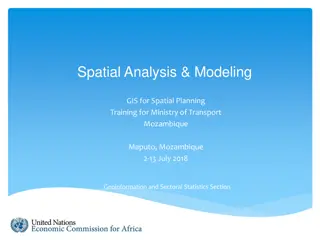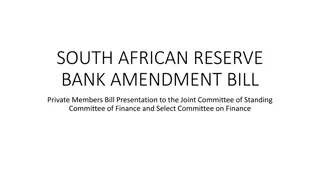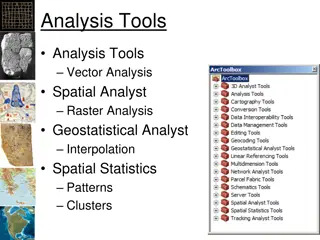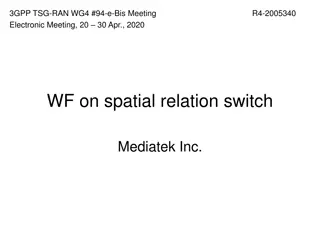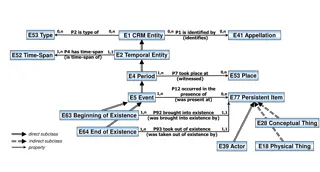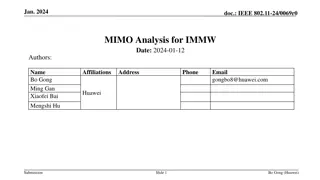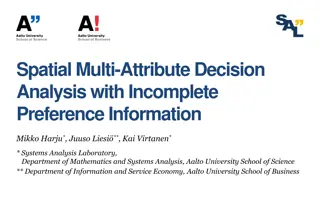Lessons from South African Spatial Targeting
South Africa has valuable experiences with spatial targeting pre- and post-apartheid, highlighting challenges and successes in industrial decentralization, spatial development initiatives, and industrial development zones. These lessons provide valuable insights for future spatial planning strategies and economic development approaches.
Download Presentation

Please find below an Image/Link to download the presentation.
The content on the website is provided AS IS for your information and personal use only. It may not be sold, licensed, or shared on other websites without obtaining consent from the author.If you encounter any issues during the download, it is possible that the publisher has removed the file from their server.
You are allowed to download the files provided on this website for personal or commercial use, subject to the condition that they are used lawfully. All files are the property of their respective owners.
The content on the website is provided AS IS for your information and personal use only. It may not be sold, licensed, or shared on other websites without obtaining consent from the author.
E N D
Presentation Transcript
SPATIAL TARGETING: LESSONS FROM SOUTH AFRICAN EXPERIENCE Professor Alison Todes School of Architecture and Planning University of the Witwatersrand
OVERVIEW SA has considerable experience with spatial targeting apartheid and post-apartheid However we have not learnt from the experience Paper provides overview of SA s most significant experiences with spatial targeting Draws generic lessons for thinking about spatial targeting in future Looks at: Regional Industrial decentralisation (under apartheid) SDIs IDZs Local/Area-based Special Integrated Presidential Projects Urban Renewal and Integrated Sustainable Rural Development Programmes Neighbourhood Development Partnership Grant Urban Development Zones
INDUSTRIAL DECENTRALISATION 1940s-1996 policy evolved Incentives for industrial development outside of the cities, especially in/near homelands Also infrastructure development, differential labour conditions Limited impact until 1980s decentralisation led by increased incentives and pressure on low-wage, labour-intensive industries (clothing) Uneven spatial impacts Broader local development in some places, but often limited, narrow Post-apartheid many supported places have declined and reconcentration in largest cities: Incentives withdrawn Institutional/governance problems in some places SA s economic trajectory away from supporting low-waged industries: trade liberalisation, import penetration, rising minimum wages, shift towards finance, consumption economy
SPATIAL DEVELOPMENT INITIATIVES 1996-2000/1: unlock growth in regions with significant unrealised potential Competitiveness, plus stimulate SMMEs Addressed blockages, improved infrastructure, anchor projects to attract investment Short sharp intervention by project team, then handed to local/provincial authority 11 SDIs with different focus Uneven spatial impact: Maputo Development Corridor most successful growth and linkage projects, but cut off too soon Many projects produced mainly short-term, low- waged jobs
INDUSTRIAL DEVELOPMENT ZONES (IDZS) From 2000 to encourage foreign investment and export promotion 3 zones linked to harbour or airport developed No special incentives or conditions implemented Not successful: limited job creation weak linkages Mainly relocations from the area Huge government relative to private sector investment
SPECIAL INTEGRATED PRESIDENTIAL PROGRAMMES 1994 5 year pilot programmes basic services, job creation, integrated, participatory development 13 projects, often special agencies Economic development not a strong focus Generally positive assessments delivery (housing, infra, services), innovation in difficult conditions but could be islands of excellence
URBAN RENEWAL AND INTEGRATED SUSTAINABLE RURAL DEVELOPMENT 2001- 10 year nodal programme to address poverty/underdevelopment in nodes, encourage inter-gov integration 8 urban nodes (townships), 13 rural nodes (districts) No special grant Urban nodes often had dedicated project teams, rural nodes run through districts Urban nodes successful in delivering services and infrastructure, but uneven Rural nodes less successful, but mixed: huge areas, weak institutional capacity/positioning, lack of dedicated funding Anchor projects (infrastructure-led) to crowd in investment - more successful in urban nodes with greater private sector interest Difficulties of integrated development, esp rural areas
NEIGHBOURHOOD PARTNERSHIP DEVELOPMENT GRANT 2006 10 year township renewal, improving conditions and platform for private development Technical support and capital grant to large number of municipalities on application shift in direction currently Reasonable performance on KPAs, resources to townships, infrastructure delivery, skills Challenges: lack of municipal capacity, political interference in projects, corruption, high staff turnover, technical obstacles, and land issues Mainly infrastructure projects Questions about value-add, impact, displacing spending?
ECONOMIC IMPACT OF AREA-BASED PROGRAMMES No baseline studies or systematic assessment of economic impact Economic focus of programmes not strong often assume infrastructure leads to econ dev But variety of initiatives Some instances of poor planning/understanding of market dynamics Mixed performance Limited in transforming townships long road Most success in attracting shopping centres in townships working with market dynamics
URBAN DEVELOPMENT ZONES 2004-9/extended to 2014 Tax incentives to promote urban renewal in inner cities through private property development Declining inner cities of 15 municipalities Relatively successful in attracting investment Spatial selectivity: 90.7% of investment in 4 metros, esp JHB Stronger impact with supportive/complementary municipal policies eg.JHB
LESSONS Programmes have made a difference, but its difficult to see economic impact due to lack of systematic baselines, monitoring and evaluation Many post-apartheid programmes short-term, so impact not fully developed Regional programmes more focused on economic development, local/area-based programmes emphasise social needs Too little recognition of role of big cities in economic development and support required And too little attention to economic and industrial development in cities Infrastructure development has been main focus - necessary but not sufficient for economic development
LESSONS Are questions as to whether spatial targeting should be done at all But if it is, need to recognise : It takes time -need sustained support too many short-term initiatives in SA Needs strong inter-governmental cooperation but often lacking despite many policies Problem of national policies contradicting spatial targeting And strong institutions skilled, experienced, committed people: critical factor in which policies were effective, and in areas of failure Important in going beyond narrowly focused development But debate about form of institutions special agency/embedded
LESSONS Need to be spatially selective support places with a real chance of success Need for limited geographical focus Difficult to resist political pressures for development in many places But all policies have had uneven spatial impacts Need to understand markets/different types of markets and potentials difficult to work completely against market most policies with a stronger economic impact have in effect worked with it Need right instruments for the context Dedicated funding Adequate levers/in the right institutional location Debate over incentives (complex outcomes) and risks Limited attention to soft support in SA: marketing, industry support etc
LESSONS Need excellent programme/project management emerges from most evaluations: Strong visions well linked to municipal planning/budgetary processes Projects linked to strategic objectives, rather than being chosen on a political basis. Need strong political acceptance and support Outcomes will be shaped not only by spatial targeting policy but also : macro-economic context, international economic conditions, broader national policies, sectoral dynamics Role of macro-economic policies in shaping development often much stronger than spatial targeting policies Local dynamics and capacities affect development, even with most top-down policies Local path dependency Unexpected and unintended consequences
LESSONS Many risks wasteful expenditure potentials for corruption support for places which have little potential distorted local development weak and inappropriate institutions. Most policies have spatial impacts need explicit consideration Need for more careful assessment, monitoring, evaluation








